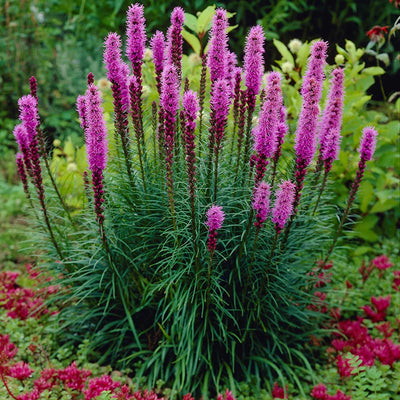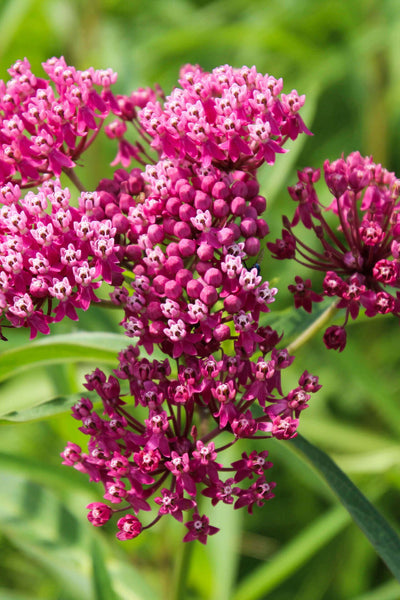When you move, you don't have to leave your beloved plants behind. If you take good care of them, you can take them with you and help them do well in their new home. They don't mind moving garden plants, but they do need to be particularly careful when moving other plants. Learn how to move garden plants securely so that you can do the move more quickly and keep your garden looking great.
You can find strong, easy-to-move plants like Milkweed and the Blazing Star Perennial at TN Nursery. Both are known for being hardy and beautiful.
Choosing Plants That Adapt Well to Moving
Choosing plants for garden that do better with change than others. When you replace hardy plants and local species, they usually do well without too much stress.
Blazing Star Perennial is an excellent example. This plant quickly adapts to new soil and grows tall, bearing bright purple flowers.
Another good choice is Milkweed, which grows for a long time after being moved and draws butterflies.
If you want to bring garden plants with you, choose ones that
Roots that are strong.
- Can handle different kinds of dirt.
- Don't depend on weak roots or unique situations.
- These kinds of plants make it easier to move your garden.
How to Prepare Plants for Transplanting
Give your garden plants time to get used to being dug up before you do it. Getting them ready right helps keep the roots healthy and reduces stress.
Step-by-Step Preparation
- Deep Watering: Give your plants a lot of water the day before you move. This helps you dig and keeps the ground wet.
- Trim and prune: Remove any dead or damaged leaves so that the plant can concentrate on establishing roots anew.
- Select the Right Garden Plant Pots: When you move plants around in the yard, use sturdy tubs or plant pots for the garden. If you need to, label them.
To begin, you can use perennials like the Blazing Star Perennial because their roots will last longer and cause less trouble.
(Tip: The University of Illinois Extension has a lot of information on how to move different kinds of plants.)
Best Practices for Replanting Your Garden Favorites
Your yard plants will rapidly grow adjusted to their new home if you replant them the appropriate way. Do these simple yet helpful things to maintain your favourite plants healthy and flourishing.
1. Choose the Right Location
Pick a place where your plant will get the same amount of sunlight as it had before. Some plants perform well in the shade, while others do better in the sun. Milkweed, for instance, does best in open spots, while some plants do better with light that has been blocked. Making sure the light levels are the same will help your plants relax and grow faster.
2. Get the soil ready
Moving garden plants is a lot easier if the dirt is healthy. Break up the dirt and add compost or other organic matter to help it drain better and get more nutrients. Rich, well-drained soil that helps plants grow strong roots is best for plants like the Blazing Star Perennial.
3. Plant again quickly and carefully
After you dig up your plants, try to put them back where they belong as soon as you can. While you move them, don't let the roots dry out. When you plant, make sure the hole you dig is big enough for the roots to fit. Place soil around roots lightly. A mild motion reduces air pockets and stiffens the plant.
4. Give plants lots of water after planting
To assist the roots adjust to their new habitat, water each plant liberally. Make sure the dirt doesn't get too wet. When you water plants the right way, they get used to their new home and grow new roots. The best times to water are early in the morning or late at night, when the water is still wet.
5. Protect your plants with mulch
Put dirt around your yard plants to keep the soil wet and keep bugs from growing. Mulch also keeps the soil at a steady temperature, which is good for plants that are still getting used to their new home. The best mulch is natural mulch, like straw or wood chips.
By following these tips, you can make sure that your newly moved plants, like the bright Milkweed and the hardy Blazing Star Perennial, settle in well and continue to grow well there.
Maintaining Healthy Plants After Moving
Helping garden plants heal and grow strong in their new space comes after you've finished moving garden plants safely. Plants often feel a little stressed after being moved, so it's important to be gentle with them. For the first few weeks, keep the dirt fairly moist, but don't water it too much, because roots that are too wet can hurt the plant. If the sun is very strong, put new transplants in the shade for a few days to give them time to get used to it.
Adding mulch helps keep the soil's temperature stable and helps keep water in. Pay close attention to your plants to see if they start to wilt or turn yellow, and cut off any leaves that are damaged. Continue to water, lightly prune, and fertilise your garden plants with a slow-release fertiliser once they have settled in order to grow garden plants successfully after you move. They will quickly get used to their new home if you give them time and care. Your favourite plants will add colour and life to the yard.
FAQs
How do I move garden plants?
Give them a lot of water, be careful when you dig around the roots, and put them in pots or other containers so you can move them. Keep the roots wet until you put them back.
When is the best time to transplant plants?
Early spring or autumn, when it's cooler, is the best time. Avoid very cold or very hot weather.
How should I water plants after moving?
Water lightly every day for the first week. After the plants get used to it, you can go back to your regular routine.
Can I move plants in summer or winter?
It's possible, but not the best thing. Protect the roots from changes in temperature and give them shade or protection if you have to move them.
Where can I buy easy-to-move plants online?
At TN Nursery, you can find choices like Milkweed and Blazing Star Perennial that last and are easy to move.


